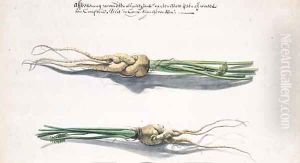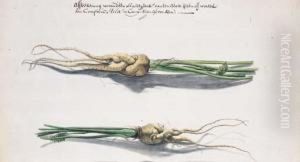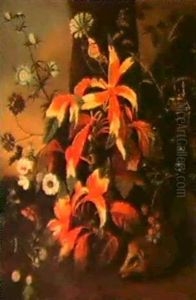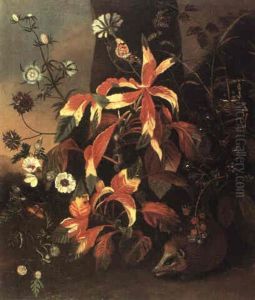Frans Withoos Paintings
Frans Withoos was a Dutch painter born in Amersfoort in 1665, during the Dutch Golden Age of painting, a period when Dutch art, especially in the northern provinces, was flourishing due to the prosperity of the Dutch Republic. Frans Withoos was known for his meticulous and detailed still lifes and landscape paintings. He was a part of an artistic family; his father, Matthias Withoos, was also a well-regarded painter from whom Frans and his siblings likely received their initial artistic training.
Frans Withoos's style was influenced by his father's work, focusing on naturalistic depictions of flora and fauna, often set in a landscape or within a lush garden. His paintings are characterized by their fine detail, vivid coloration, and the skillful arrangement of plants, insects, and other elements of nature, which were rendered with scientific accuracy as well as artistic flair. Such works reflect the contemporary interest in botany and the exploration of the natural world, which was a significant aspect of the cultural environment of the 17th century.
Although Frans Withoos is not as widely known as some of his contemporaries, his works contribute to the overall understanding of Dutch still life and naturalist painting of the period. Withoos's paintings can be seen as part of the larger tradition of vanitas and memento mori artworks, which often included elements that symbolized the transience of life and the fleeting nature of earthly pleasures.
Unfortunately, Frans Withoos's career was not very long, as he died at the relatively young age of 40 in 1705. Despite his untimely death, his works continue to be appreciated for their beauty and technical skill, and they can be found in various art collections, including museums in the Netherlands. His legacy is also sustained through the historical record of the Withoos family and their collective contribution to Dutch art history.



